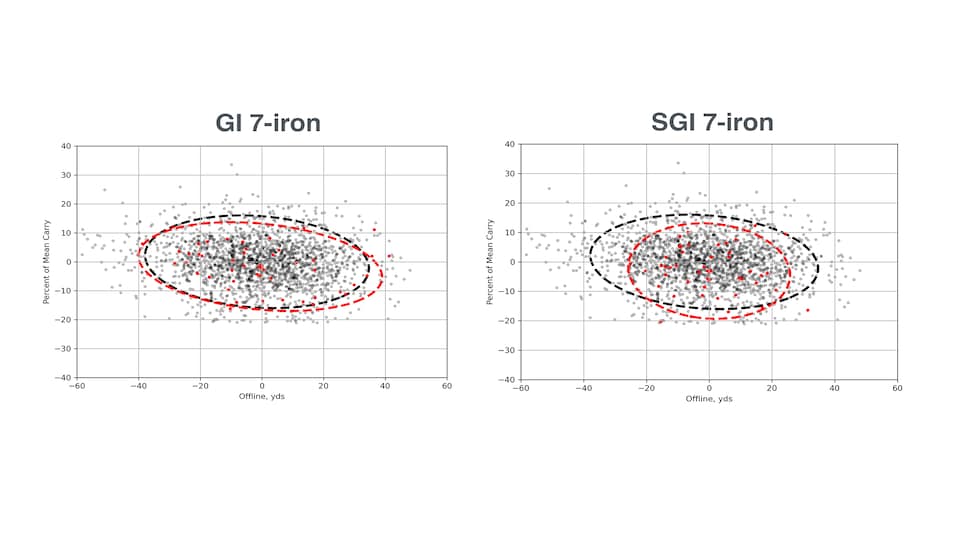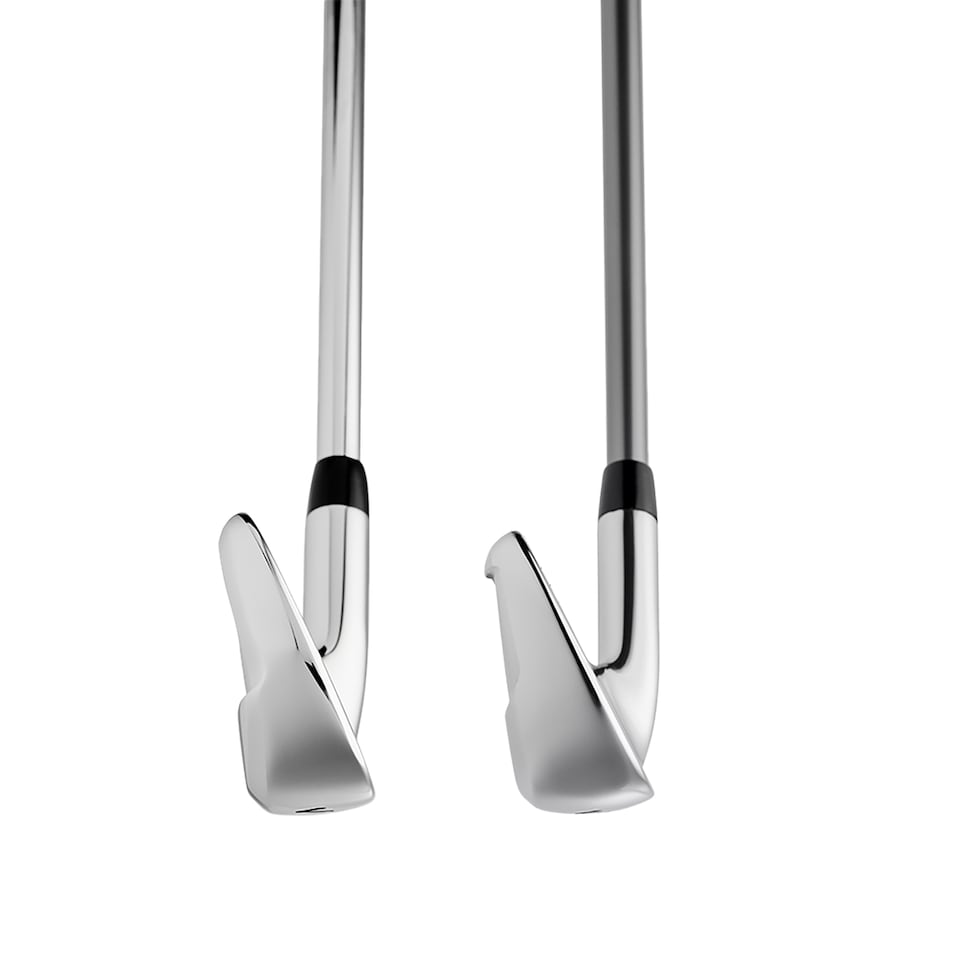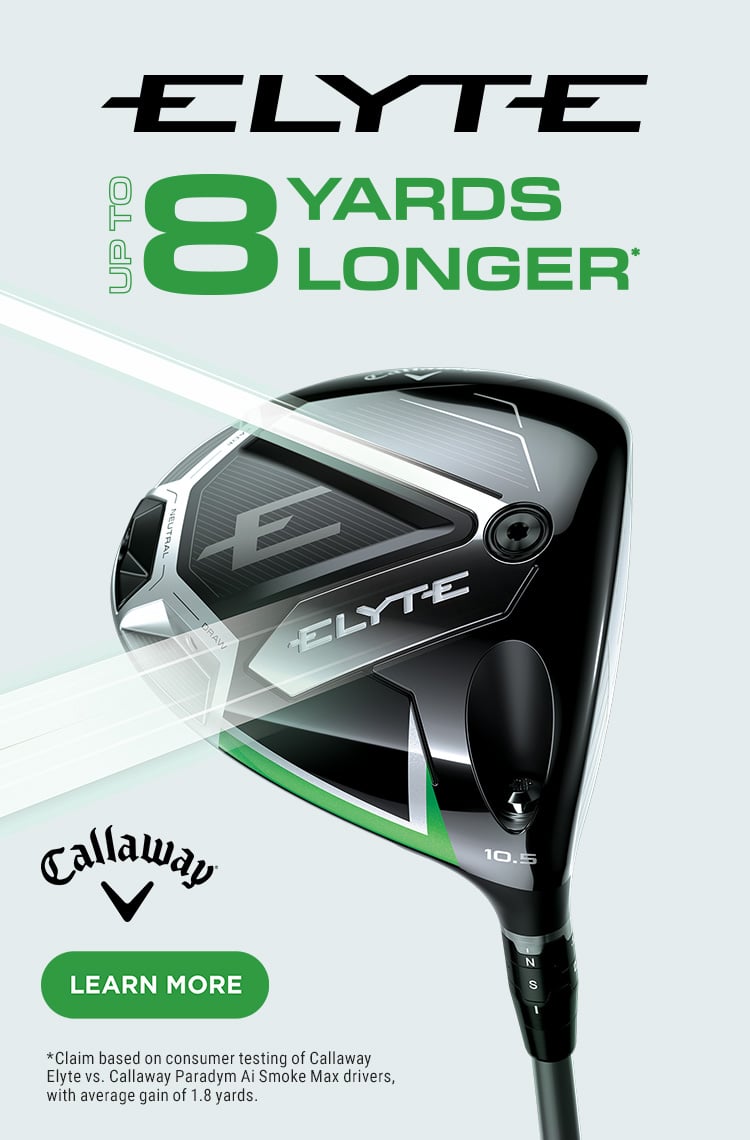While you might find the visual appeal of Super Game Improvement irons in the same category as marmite, like the benefits of the derivative of yeast extract that doubles as a spreadable paste, the allure of the Super Game Improvement iron category is as clear as a mythical fountain of youth: Restore those lost yards that time and eroding (or lack of) skills have taken away, without having to embark on a new keto diet or fitness regimen or yoga practice. But our data from our Hot List testing shows that the players who need SGI irons the most may not be getting more distance.
What they’re getting is more important than that.
During Hot List testing, we use Rapsodo’s MLM2 Pro launch monitor to track every shot of our group of 32 player testers. Those players are broken down into three handicap groups — Low, Middle and High — and only the High Handicaps hit SGI irons. To get a gauge of how much of an advantage Super Game Improvement irons might offer, we compared how our High Handicap group hit SGI irons to irons in the Game Improvement category. Specifically, we looked at data for SGI and GI irons (7-iron shots) from the same companies. In other words, Callaway’s SGI iron vs. Callaway’s GI iron, and so on.
When we look at the data from Hot List player testing comparing SGI and GI irons among seven different companies, the average carry distances for the GI models were longer in nearly every case when compared to that company’s corresponding SGI iron model (six of the seven pairs of irons). The overall averages among our 12 High Handicap players showed GI irons flew 2.02 percent farther vs. the corresponding SGI iron. In practical terms, that means three yards on a 150-yard shot.
But things change when we look at the average dispersion. Using the data from Rapsodo’s launch monitors and analysis by Tom Mase, Ph.D., retired professor of mechanical engineering at Cal Poly and a long-time member of the Golf Digest Technical Advisory Panel, scatter plots of the SGI irons distance and dispersion show significantly tighter performance when compared to GI irons. In some cases, a company’s SGI iron’s distance dispersion ellipse measured nearly 50 percent tighter than the corresponding GI iron. Overall, shots from our player testers who hit SGI irons fit in a space 23 percent smaller than those same players achieved when hitting GI irons.

Here’s a representation of the differing dispersion patterns found between SGI and GI irons, among our High Handicaps during Hot List testing last fall. The red ellipse represents a specific iron model, while the black represents all irons. Notice the SGI iron flies a bit shorter, but those mis-hits finish within a tighter window.
Hot List 2025: The best Super Game Improvement irons.
As a refresher, SGI irons generally feature a larger overall shape, including greater sole width and thicker toplines and enhanced perimeter weighting. That usually yields a center of gravity that is lower to help shots launch higher. A good gauge is to use the width of your thumb to measure the depth of the sole. SGI irons feature soles wider than the width of a typical thumb, while the soles on GI irons are narrower (a thumb width or less). SGI irons usually are designed with greater stability on off-center hits (moment of inertia, or MOI), as well as featuring a head that’s more offset from the shaft to aid both higher launch and ease squaring of the face at impact. GI irons try to incorporate some of those same properties but in a more compact shape, with thinner top lines. In general, SGI irons can look a little like clubs for a beginner or hack, especially when compared to sleeker GI irons or even Players Distance irons. As we’ve seen year after year, though, shelf appeal can be pretty seductive when it comes to new club purchases.
Hot List 2025: The best Game Improvement irons.

Sometimes the difference between a Game Improvement iron (left) and a Super Game Improvment iron is not vast. See the slightly wider sole and thicker topline on the Callaway Elyte X, an SGI iron, vs. the standard Elyte, a GI iron, left.
Those appearance differences do matter, however. When we look at what that same High Handicap group said when it came to our Hot List criterion of Look/Sound/Feel, the sleeker GI irons fared dramatically better than the bulkier SGI entries. Based on our five-point rating scale, the average rating in L/S/F was almost half a point higher for a GI iron than for an SGI iron. But while it’s clear that our players, even our High Handicap players, much prefer the overall sensory experience of Gi irons over SGI irons, in practical terms, our data on ball flight show that SGI irons would lead to an increased likelihood of hitting more greens in regulation. Even on hit greens, those long putts could be 10-15 feet closer.
Does this mean that high handicappers should only play SGI irons? No. And to be clear, none of our High Handicap panelists play SGI irons as their gamers. The right irons are largely based on the individual player, and any fitter worth listening to will tell you that whether an iron is categorized as SGI or GI shouldn’t mean nearly as much as how an individual model performs in the hands of an individual golfer. This clearly is reflected by what our players saw and said. For example:
Matt Singer, a 11-handicap with a moderate clubhead speed, hit the Mizuno Hot Metal HL SGI irons better than the GI Hot Metal counterpart. He averaged eight more yards with the HL with a much tighter miss pattern and a better landing angle. Said Singer of the SGI model, “It produced straight shots with maybe the slightest bit of a draw.” Conversely, Shane Popham is a 15-handicapper who swings probably 20 miles per hour faster than Singer. He hit the GI Hot Metal just as straight but dramatically farther than the higher-lofted, spinnier Hot Metal HL (“Good shots were electric, booming off the face… it’s like a driver in the face of an iron,” he said). But the higher launch and extra spin were two attributes that made it a better fit for Singer.
The bottom line: When you’re evaluating your next set of irons, boosting all-out carry distance always should be a goal, but maybe put those feelings of what you think an iron should look like on the shelf. Focus instead on what your shots look like. There’s nothing prettier than a whole lot of balls that end up a lot closer to the hole.
This article was originally published on golfdigest.com

